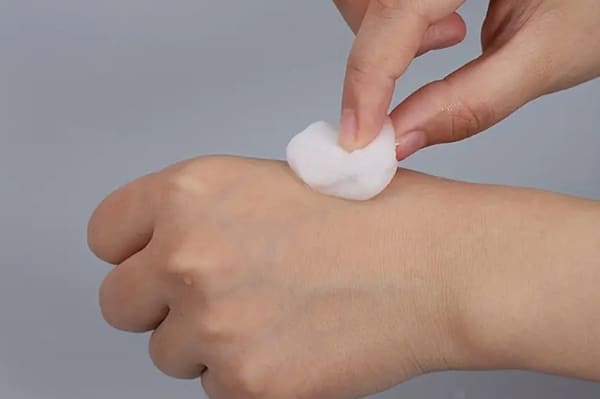Cotton balls are commonly used in medical and home settings for various purposes, including wound cleaning, applying ointments, and cosmetic use. To ensure that these cotton balls are safe for use, particularly when dealing with sensitive skin or open wounds, it is important to sterilize them to eliminate bacteria, viruses, and other harmful microorganisms. Sterilization ensures the cotton balls are free from contaminants, reducing the risk of infection. In this article, we will explore different methods to sterilize cotton balls effectively.
Why Sterilize Cotton Balls?
Cotton balls may seem clean, but they can harbor dust, bacteria, and other contaminants, especially if they have been handled or stored improperly. Sterilizing cotton balls is particularly important when using them for medical or first-aid purposes, such as cleaning wounds or applying medication to sensitive areas. Sterilized cotton balls help prevent infections and other complications that can arise from using contaminated materials.
Methods for Sterilizing Cotton Balls
There are several ways to sterilize cotton balls depending on the resources available and the level of sterilization required. Here are some of the most common methods:
1. Steam Sterilization (Autoclaving)
Steam sterilization, or autoclaving, is one of the most reliable methods for sterilizing medical equipment and materials, including cotton balls. It uses pressurized steam to kill microorganisms, including bacteria, viruses, and spores. This method is commonly used in hospitals and medical facilities, but it can also be replicated at home with the right equipment.
How to sterilize using an autoclave:
- Place the cotton balls in sterilization bags or wrap them in a clean cloth.
- Load them into the autoclave, ensuring that they are not too tightly packed so that steam can penetrate effectively.
- Set the autoclave to the appropriate temperature, usually around 121°C (250°F), for 15-20 minutes.
- Once the cycle is complete, allow the cotton balls to cool before using or storing them in a sterile container.
Advantages:
- Kills a wide range of microorganisms, including spores.
- Provides a high level of sterilization.
Disadvantages:
- Requires access to an autoclave or steam sterilizer, which may not be available in home settings.
2. Boiling Water Method
If an autoclave is not available, boiling cotton balls in water is an effective way to achieve sterilization at home. Boiling water can kill most bacteria and pathogens, although it may not be as thorough as steam sterilization for certain heat-resistant microorganisms.
How to sterilize using boiling water:
- Boil a pot of water and place the cotton balls into the pot using sterile tongs.
- Allow the cotton balls to remain in the boiling water for at least 10-15 minutes.
- After boiling, remove the cotton balls with sterile tongs and place them on a clean, dry surface (like a sterilized cloth or tray) to air dry.
- Store them in a clean, airtight container once they are completely dry.
Advantages:
- Simple and requires minimal equipment.
- Effective for killing common pathogens.
Disadvantages:
- May not eliminate heat-resistant spores.
- Cotton balls must be completely dry before storage to avoid mold or bacterial growth.
3. Microwave Sterilization
Another convenient method for sterilizing cotton balls at home is to use a microwave. This method is effective because the microwave produces heat that can kill bacteria and microorganisms. However, caution should be taken to avoid setting the cotton balls on fire, as dry cotton is highly flammable.
How to sterilize using a microwave:
- Moisten the cotton balls slightly by dipping them in a small amount of water. This is essential to prevent the cotton balls from catching fire.
- Place the damp cotton balls on a microwave-safe plate.
- Microwave the cotton balls on high for 1-2 minutes.
- Let the cotton balls cool before handling them, and ensure they are completely dry before storing them in a sterile container.
Advantages:
- Quick and accessible, as most households have a microwave.
- Easy for small batches of cotton balls.
Disadvantages:
- This must be done with caution to prevent fire hazards.
- Not as thorough as autoclaving in terms of sterilization.
4. Chemical Sterilization (Alcohol or Hydrogen Peroxide)
For those looking to sterilize cotton balls quickly for immediate use, chemical sterilization with alcohol or hydrogen peroxide is an option. This method is suitable for disinfecting cotton balls for tasks such as wound cleaning, where immediate sterility is important.
How to sterilize using alcohol or hydrogen peroxide:
- Dip the cotton balls in 70% isopropyl alcohol or hydrogen peroxide (3%).
- Let them soak for a few minutes to ensure that the cotton is fully saturated.
- Once soaked, the cotton balls can be used immediately for disinfecting wounds or other applications.
- For longer-term storage, allow the cotton balls to air dry in a sterile environment before placing them in a clean, airtight container.
Advantages:
- Quick and easy for immediate use.
- Requires minimal equipment and is highly accessible.
Disadvantages:
- Cotton balls soaked in alcohol or hydrogen peroxide may need time to dry before use in certain applications.
- Not suitable for long-term storage of sterilized cotton balls.
Best Practices for Handling Sterilized Cotton Balls
Once the cotton balls are sterilized, it’s important to handle them properly to maintain their sterility. Here are some tips:
- Use sterile tongs or gloves to handle the cotton balls once they are sterilized.
- Store them in airtight, sterile containers to prevent contamination.
- Label the containers with the date of sterilization if you plan to store them for an extended period.
- Avoid touching sterilized cotton balls with bare hands, as this could introduce contaminants.
Conclusion
Sterilizing cotton balls is essential for ensuring they are safe for use in medical, cosmetic, or other sensitive applications. Whether through steam sterilization, boiling, microwaving, or chemical disinfection, there are various methods to achieve sterilization based on the available equipment and the level of sterility required. Proper sterilization and handling techniques can help reduce the risk of infection and ensure that cotton balls are safe for any purpose.
Post time: 10月-14-2024






